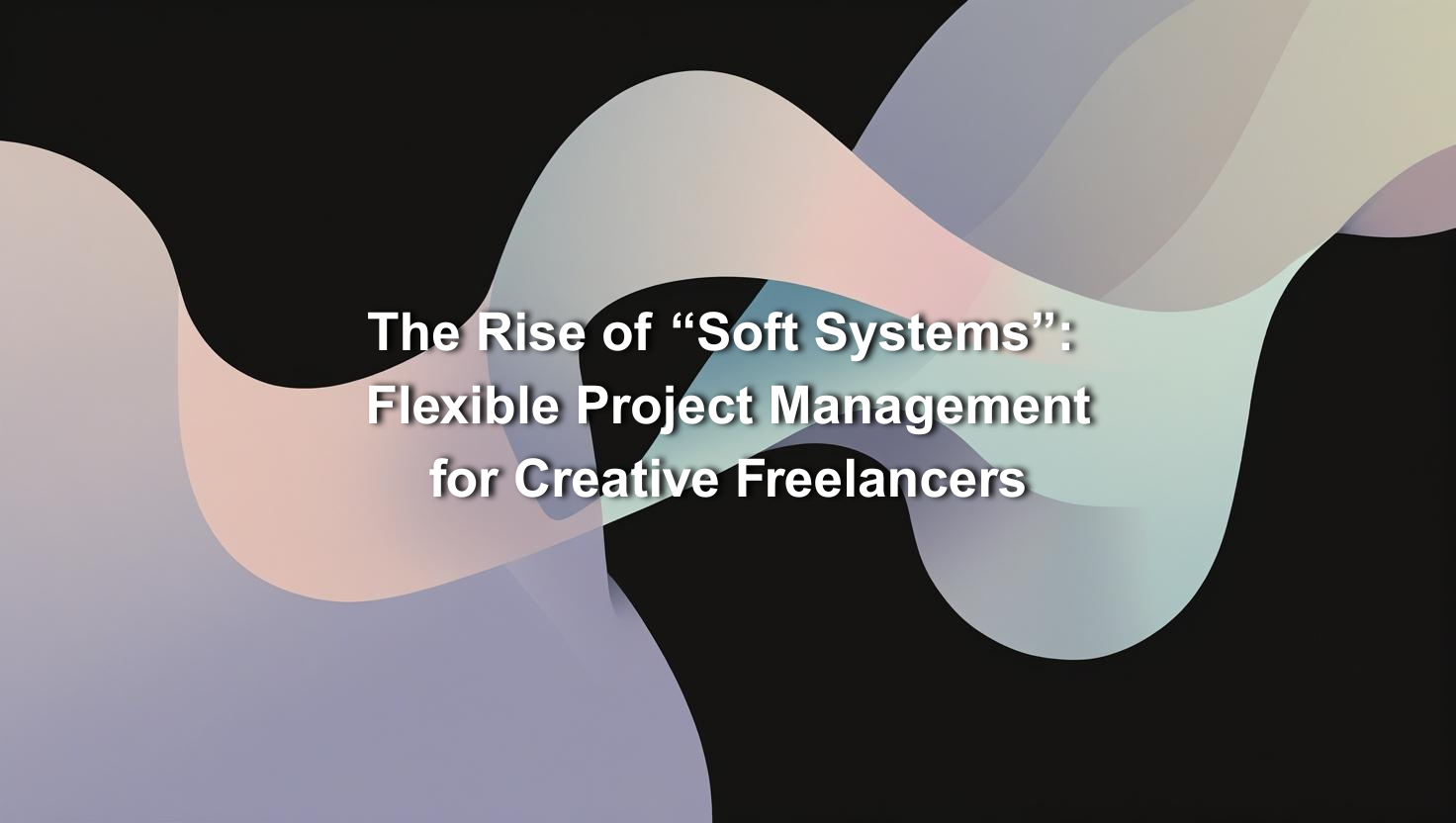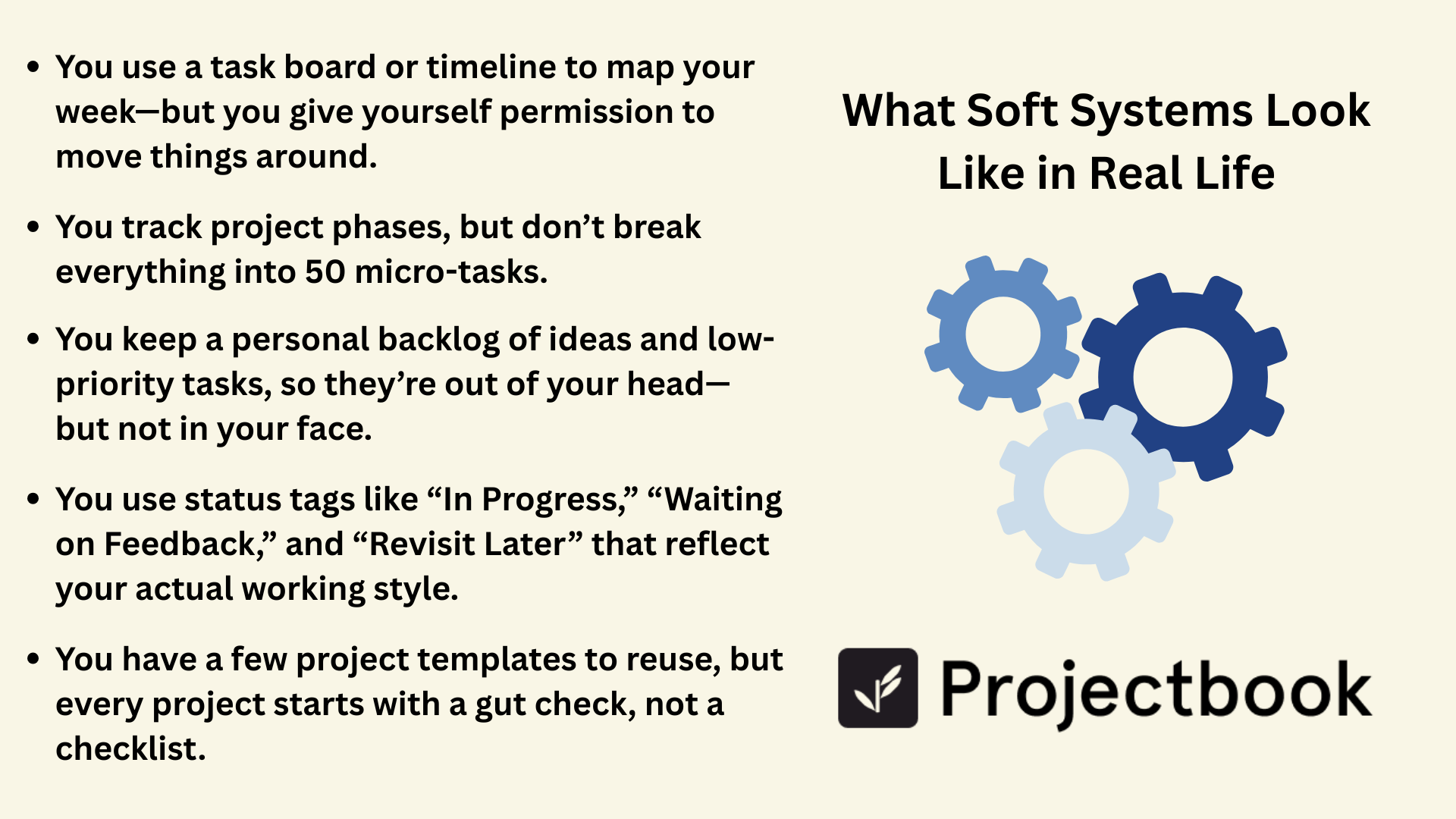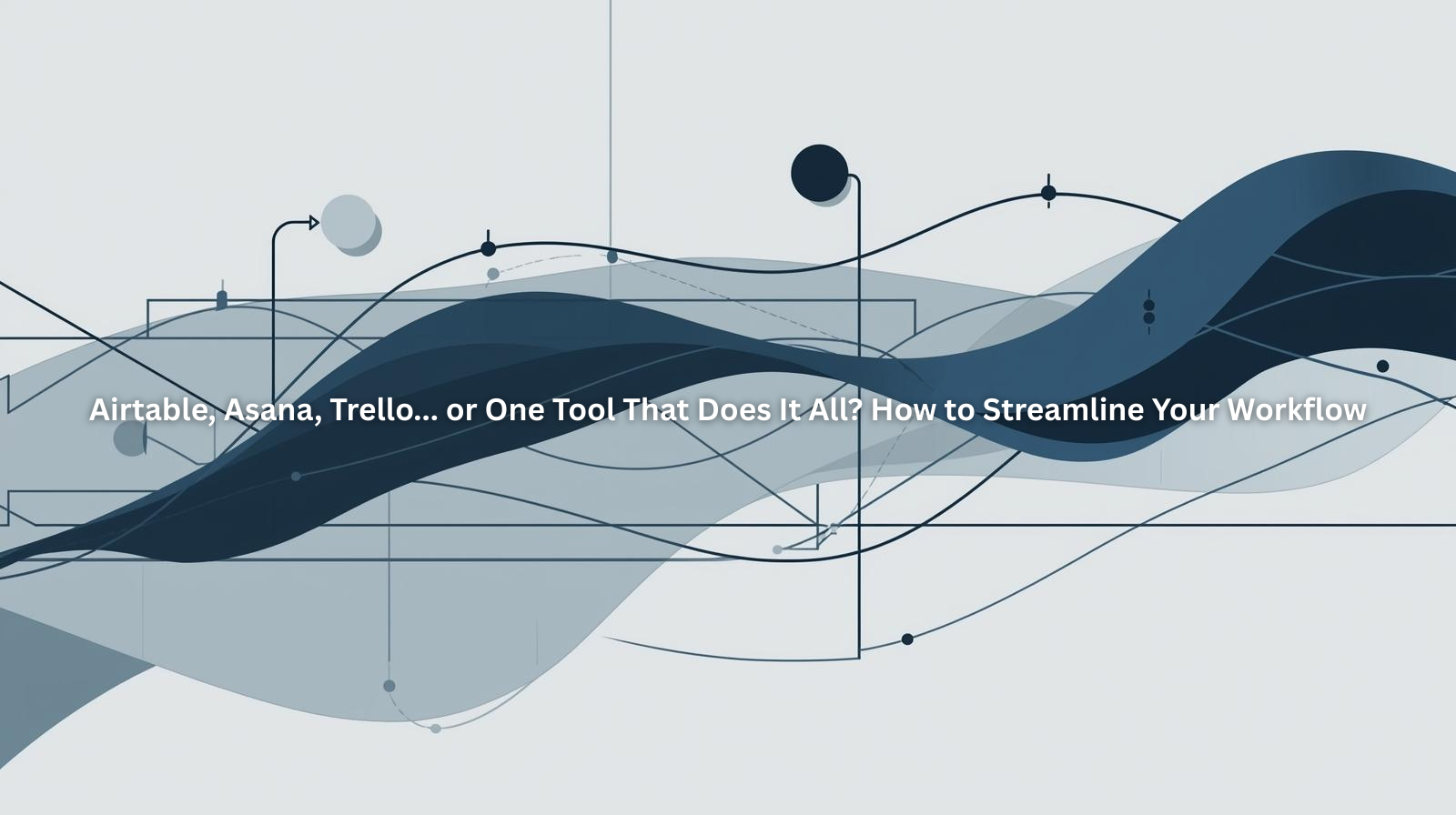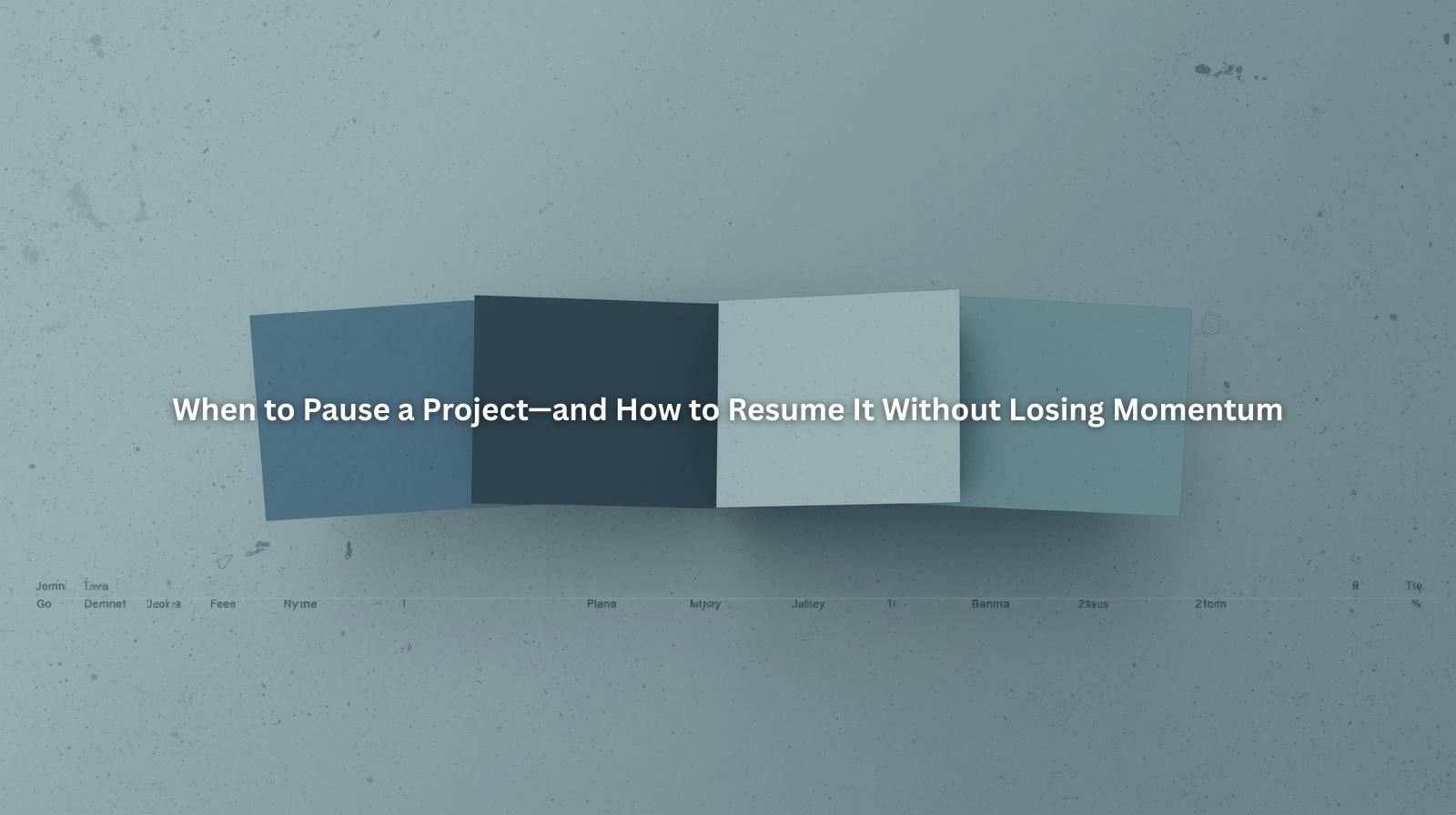The Rise of “Soft Systems”: Flexible Project Management for Creative Freelancers

Table of Contents
- What Are “Soft Systems”?
- Why Creative Freelancers Need Flexible Workflows
- The Problem with Traditional Project Management Tools
- What Soft Systems Look Like in Real Life
- How to Build Your Own Soft System (That Actually Feels Good)
- How ProjectBook.co Supports Soft Systems for Solo Creatives
- FAQ: Project Management Without the Pressure
1. What Are “Soft Systems”?
A “soft system” is a lightweight, flexible structure that helps you organize your work—without locking you into a rigid process.
Think of it as scaffolding instead of a fortress.
Soft systems prioritize clarity, momentum, and adaptability. They’re not about tracking every metric or following a strict methodology. Instead, they offer just enough support to help you move forward, while leaving space for creativity, energy shifts, and real life.
For creative freelancers—designers, writers, strategists, consultants—they’re a lifesaver. Because sometimes the work isn’t linear. And your systems shouldn’t expect it to be.

2. Why Creative Freelancers Need Flexible Workflows
Most traditional project management systems assume a few things:
- You work in fixed time blocks
- Your projects are clearly scoped from the start
- You have a team or manager assigning tasks
- Everything can be tracked, categorized, and “done” in a predictable way
But creative work doesn’t always fit that mold. Sometimes, writing a headline takes 2 minutes. Other times, it takes 2 hours and a long walk. Inspiration isn’t a milestone, and neither is flow.
Freelancers also wear many hats. You’re delivering client work, handling operations, writing emails, managing revisions, and thinking about next month’s income—all at once.
What you need is a system that bends when your day bends. A tool that helps you stay grounded, but doesn’t feel like a burden.
That’s where soft systems come in.
3. The Problem with Traditional Project Management Tools
If you’ve ever opened a tool like Asana, ClickUp, or Jira and immediately felt overwhelmed by the dashboards, labels, and complex workflows—you’re not alone.
Many of these platforms are designed for teams, not solo freelancers. And while they’re powerful, they can become overkill fast.
They require setup. They create visual clutter. And they often assume a level of operational complexity that a solo business just doesn’t need.
The result? You avoid using your system altogether. You revert to sticky notes, random Google Docs, and mental checklists—because at least those don’t judge you when you move a task five times.
But that’s not sustainable either.
What you need is something in between: a soft, supportive system that helps you keep moving—without making you feel like you’re always behind.
4. What Soft Systems Look Like in Real Life
Here’s what a soft system might look like for a creative freelancer:
- You use a task board or timeline to map your week—but you give yourself permission to move things around.
- You track project phases, but don’t break everything into 50 micro-tasks.
- You keep a personal backlog of ideas and low-priority tasks, so they’re out of your head—but not in your face.
- You use status tags like “In Progress,” “Waiting on Feedback,” and “Revisit Later” that reflect your actual working style.
- You have a few project templates to reuse, but every project starts with a gut check, not a checklist.
The key? You’re not serving the system. The system is serving you.

5. How to Build Your Own Soft System (That Actually Feels Good)
Here’s how to start building a soft system that works with your brain—not against it.
Start by noticing your natural workflow. Do you think in days, phases, or creative blocks? Do you like working on one project per day, or switching between tasks?
Then, create containers for your work—not cages. Maybe that means:
- A board view where you can drag tasks across flexible columns
- A weekly dashboard with 3–5 “focus tasks” and space for spontaneous ideas
- A project tracker that doesn’t require you to fill in every detail, but gives you enough structure to see progress
Finally, revisit and revise. Your system will evolve as your business evolves. That’s the beauty of soft systems—they’re not built to be perfect. They’re built to move.
6. How ProjectBook.co Supports Soft Systems for Solo Creatives
ProjectBook was designed with creative freelancers in mind. We know you don’t need an enterprise-level dashboard—you need a lightweight workspace that works with your rhythm.
With ProjectBook, you can:
- Create flexible task lists or timelines for each project
- Drag and drop tasks between stages (without pressure)
- Add personal labels like “High Focus” or “Waiting” that match your process
- Store client feedback, notes, and deliverables in one calming space
- Use templates when you want structure—but edit freely when you don’t
It’s structure without rigidity. Clarity without micromanagement. And a digital home base that’s actually pleasant to use.
7. FAQ: Project Management Without the Pressure
Is a soft system the same as “no system”?
Not at all. It’s structured—but intentionally lightweight. A soft system helps you stay organized without over-engineering your workflow.
What if I still want deadlines and structure?
You can absolutely have those! Soft systems can include dates and timelines—they just give you room to adjust and breathe.
Can I use ProjectBook as a soft system?
Yes. That’s one of its core strengths. You can use it with as much or as little structure as you need—and adapt your workspace to fit the season you're in.
What if my clients use more formal tools?
That’s okay. You can still manage your end of the work in ProjectBook and deliver polished results without showing the mess behind the scenes. Soft systems don’t mean sloppy—they mean sustainable.
Final Word
You don’t need to be a productivity robot to run a successful solo business.
You just need systems that support your focus, honor your creativity, and leave space for real life. That’s the power of soft systems: they’re light enough to flex, but strong enough to hold your work together.
With ProjectBook.co, you can build a system that feels like a co-pilot—not a taskmaster.
Because doing great work shouldn't come at the cost of burnout, overwhelm, or endless checklists.
It should feel like flow. With just enough structure to carry you forward.


